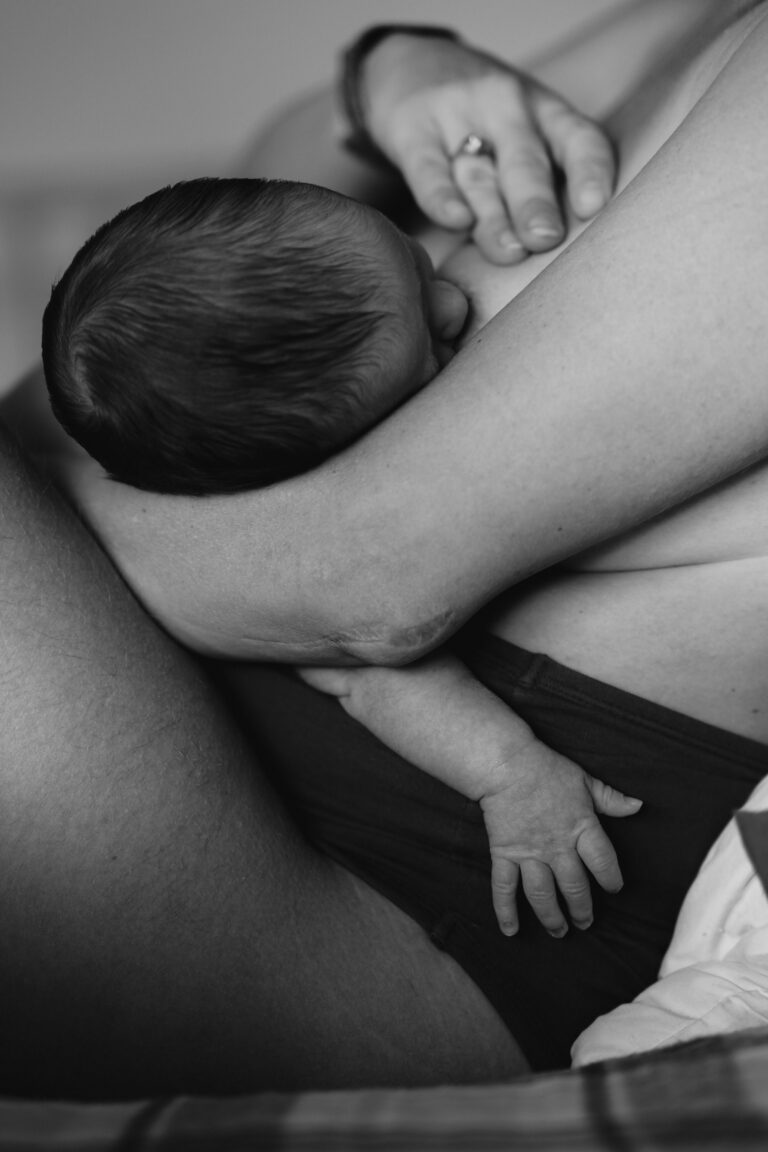Childbirth can be a whirlwind—a complex dance of hopes, uncertainties, intensity, and profound vulnerability. Many parents find themselves wondering: how much difference can one person’s presence make in a delivery room surcharged with emotion, medical action, and life-altering moments? If you’re exploring the birth partner role during childbirth, you might be wrestling with your own balancing act: wanting to offer comfort, fearing you’ll freeze, perhaps dreading the moment you’ll watch a loved one in pain. Should the birth partner know all the right words, or every trick to ease discomfort? Not really. What matters most: being attuned, being prepared, and being a steady hand (sometimes literally, sometimes metaphorically) amid all the flurry. This guide will clarify what to expect from the birth partner role during childbirth, why it matters so much for the birthing person, how preparation can change everything—and what practical actions lead to both emotional reassurance and smoother clinical outcomes.
Why the birth partner role during childbirth is a real game-changer
Some might ask, “Does a companion at birth truly make a difference?” Medical science answers with a resounding yes! The birth partner role during childbirth has been associated with multiple clinically significant benefits—reduced anxiety and perceived pain, lower rates of cesarean delivery, fewer medical interventions, heightened satisfaction, and even shorter labor durations. It’s not just about handing over water or holding hands during a contraction (although those are important, too!). The emotional support provided—gentle words, soothing touch, calm presence—creates a feeling of security that allows the labouring person’s body to focus on the work it knows instinctively how to do.
Layers of support: emotional, physical, practical
A birth partner provides support that comes in many forms:
- Emotional presence: offering reassurance, simply being there, listening actively, responding to cues.
- Practical help: like managing details (packing bags, handling paperwork), fetching snacks or an extra pillow, dimming the lights, playing music—small actions with outsized impact.
- Physical comfort: assisting with favoured labor positions, massaging sore spots, encouraging fluids, or holding the birthing person upright, especially when contractions intensify.
Communication is key. Sometimes, the best support is doing nothing—just sitting by silently, letting your partner know you’re there, no matter what.
Emotions, preferences, and preparation: the invisible work
It’s not just the birthing person—birth partners have feelings too
Let’s be candid: the birth partner role during childbirth is emotionally charged. Maybe you are anxious about “doing it right,” feel queasy at the sight of blood, or worry you’ll say the wrong thing at the wrong time. For some, it’s the fear of hospitals or medical settings that tugs at their nerves. For others, the challenge is being present and useful without feeling helpless. And occasionally, the birthing person may prefer private moments, seeking boundaries for their own comfort. Discussing such topics beforehand is not just recommended—it’s essential.
- Honest conversations before labor allow both of you to set expectations, air doubts, and ensure each voice is heard.
- Keep the dialogue open: what does the birthing person want from you? When would you need support for yourself?
Antenatal classes: demystifying the unknown
There’s an old saying: “Preparation is half the battle.” Attending antenatal classes together does more than teach breathing exercises or pain management strategies—these sessions offer a playing field to explore different birth scenarios and practice support roles. Birth partners get to try out massage, hand-holding, or even pretending a contraction is happening, just to see what fits the couple’s rhythm.
Antenatal classes often explain:
- What actually happens in each stage of labor, including signs to watch for.
- When to head to the hospital—timing contractions, interpreting waters breaking or mucus plug loss.
- Non-medical comfort techniques (visualization, touch, hot/cold packs, shifting labour positions).
- Navigating situations like induced labor, possible cesarean section, and methods to promote early bonding.
Building a robust birth plan together
A solid birth plan is more than a checklist; think of it as a mutual pact. It records preferences both for the birthing person and for the birth partner, detailing who will communicate with medical staff, how to approach pain relief, whether you want to cut the umbilical cord, and preferences for early skin-to-skin contact. Being clear ahead of time boosts confidence—especially when sudden changes require quick adaptation.
Managing practical matters: the unsung details
Packing and logistics: small things, big difference
When it’s “go time,” a little planning goes a long way. The birth partner role during childbirth often means double duty: supporting emotionally and ensuring everything runs smoothly on the practical side.
- Pack a hospital bag for both: comfy clothes, toiletries, snacks, water bottles, chargers, essential paperwork, and a copy of the birth plan.
- Have transport sorted, and keep the car fuelled and ready.
Mindful self-care for the birth partner
Don’t discount your own needs. Bring snacks, stay hydrated, and wear something comfortable. If the birth is prolonged, a quick break to step outside or breathe deeply for a minute isn’t just forgivable—it’s smart. Communicate with staff or the birthing person if you feel overwhelmed. Recharge so you can give your best.
Mastering emotions and challenges: from anxiety to advocacy
The birth partner role during childbirth can stir a cocktail of emotions—helplessness, worrying about pain, or frustration at not being able to “fix” everything immediately. It’s utterly normal. Talk it out with your partner, ask questions of the medical staff (“What does this monitor mean?” or “Is this level of pain expected?”), and remember: engagement is often as effective as expertise.
Advocacy and flexibility with medical teams
Things don’t always go as planned. Sometimes, interventions are necessary, or labour takes a detour. Here, the birth partner’s job pivots: stay calm, interpret the birth plan for medical staff, ask clarifying questions, and adapt support for evolving needs. Respect all guidelines (number of visitors, allowed comfort measures, cord cutting, etc.), but always communicate the birthing person’s wishes respectfully.
Creating a positive birth environment
Setting the scene: comfort, calm, and privacy
Little details shape big experiences. Adjust lights, cue up soothing music or favourite bhajans, keep the birthing person hydrated, respect her pace regarding conversation, physical contact, and breaks. Remind her—with words or a meaningful squeeze of the hand—that she’s strong, she’s supported, and she’s not doing this alone.
Active listening and emotional validation
Labour heightens sensations, both physical and emotional. When the birthing person is frightened or exhausted, let your responses—verbal and non-verbal—be gentle. Validating her experience, without judgment, helps her feel empowered and seen.
Physical comfort and non-medical pain relief
Hands-on support
Offer to try different labour positions (side-lying, squatting, leaning forward), assist with breathing rhythms during contractions, or rub her lower back. Sometimes a heated pack or an ice towel provides instant relief, sometimes distraction helps—like reminding about a favourite film or inside joke.
Respecting boundaries
Check for changing needs—sometimes, she’ll want silence; other moments, firm encouragement. Follow her cues closely.
Collaboration with medical staff: partnership, not opposition
Clarity and respect
Good questions build trust: clarify the meaning of a medical term or a recommended procedure. Work in partnership with doctors and nurses—acknowledge their expertise, and share the birth plan early. The birth partner’s calm can set the tone for the room, smoothing communication all around.
Adapting to unpredictability
Labour is rarely a textbook scenario. Be flexible—if a plan changes, help your partner cope, support new decisions, and keep empathy at the forefront.
Managing logistics, memories, and support after birth
Handling “the admin” and special moments
Keep hospital papers ready, organize visitor communication in advance (so you’re not distracted by WhatsApp pings during contractions), respect requests for quiet or privacy, and coordinate travel or homecoming plans. If capturing photos or videos is important, check with hospital policy—and always, always seek everyone’s comfort before clicking.
Postpartum actions: support truly doesn’t end at delivery
Immediately after birth, the birth partner role during childbirth becomes more expansive—the newborn may need skin-to-skin contact, the mother may need support with first breastfeeding or private time, and practical help with food or phone calls. Setting boundaries with visitors, gentle advocacy for privacy, and ongoing emotional reassurance all smooth the homecoming and adjustment period.
Tradition, culture, and finding the right support
Every family’s customs around childbirth are unique—some may favour female relatives as main birth companions, others might spotlight partner involvement. It’s entirely acceptable to tailor the experience. Discuss traditions or special requests with caregivers early, ensuring they’re added to the birth plan and respected wherever possible. There is no one-size-fits-all model: whether the main support is a parent, spouse, sibling, or doula, what matters is a conscious, agreed-upon approach that places everyone’s needs (mother, baby, and supporting partner) at the centre.
Key Takeaways
- The birth partner role during childbirth makes a measurable difference: supporting with presence, advocacy, and hands-on comfort through every stage.
- Preparation—attending antenatal classes, having honest conversations, and drafting a clear birth plan together—builds confidence, trust, and clarity.
- Emotional and practical support provide a sense of security that can ease pain, reduce intervention rates, and boost satisfaction with the birth experience.
- Medical, cultural, and personal preferences should guide each couple’s choices; the right support means respecting individuality, not following a script.
- Ongoing communication, mutual respect, and flexibility enable the birth partner to stay attuned—even when the unexpected arises.
To access further guidance, clinically validated tips, and free child health questionnaires, consider downloading the application Heloa for tailored support.
Questions Parents Ask
Can a birth partner be someone other than the baby’s other parent?
Absolutely. The birth partner role during childbirth is not limited to one’s spouse or partner. In many cases, a close friend, parent, sibling, or a trained professional like a doula takes this place. The essential factor? Trust and comfort for the birthing person. Each family’s needs are different—the best birth partner is someone who can remain calm, empathetic, and present.
Is it normal for a birth partner to feel anxious or unsure about what to do?
Definitely. Many birth partners initially worry about whether they will be able to provide the right support, or even just handle their own emotions during the process. This is very common. Simply being present, showing encouragement, and listening actively are already very powerful supports. Attending antenatal classes helps build confidence, and discussing specific fears or expectations before the day arrives can clear up a lot of uncertainty.
What if the birth partner needs to step out or take a break during childbirth?
This is understandable and sometimes necessary. Labour can be a long, emotionally intense process. Brief pauses do not lessen your support. Informing medical staff before stepping out—so the birthing person remains well cared for—is recommended. Caring for yourself helps you stay focused and effective when present.
Further reading:









